

SUUNTOブログ
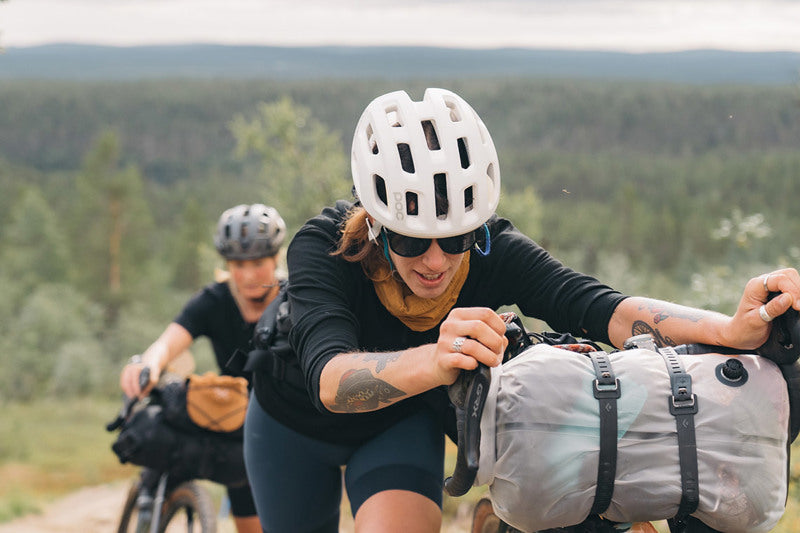
Five adventure films to watch
Lost then found
When you lose a part of yourself you begin to question why you were holding onto it so much, to begin with, in a life where change is the only constant, how do we let go and focus on the things that bring us joy?
Lost then found is the introductory episode of Suunto ambassador Christian Meier’s year-long project exploring the transition from a professional cyclist to an ultra trail runner.
”This project is about stepping back to gain a better perspective on life’s highs, lows, and challenges, which make it beautifully complex,” says Christian.
Caught in an avalanche. Is freeriding worth the risk?
Suunto ambassador Antti Autti has just started his 20th season as a professional snowboarder and kicks it off with a new Arctic Lines episode called “Twenty”. Twenty is actually split in chapters one and two so there’s plenty to watch!
“I’m not going to say I want to celebrate the anniversary but I want to have a season where I am really going for it!” Antti says.
In Twenty Chapter 2, Antti gets in trouble and is taken down by an avalanche. He is forced to think hard about his approach to risk-taking while exploring.
”No matter what we do, accidents can happen. And when that happens, our greatest responsibility is to share the experiences honestly, even if it’s painful. That way, others can learn from our mistakes and make better decisions in the backcountry.”
Bikepacking the Arctic Post Road
Adventure buddies and Suunto ambassadors Sami Sauri and Henna Palosaari went on a bikepacking trip way up above the Artic Circle over summer. Wild, vast open spaces, reindeer, kindly locals - they had a blast.
“Experiencing the simplicity of life up north and the local culture combined with the tranquility of the long wilderness sections creates a bikepacking experience that takes you miles away from the city hustle,” says Henna about the 430 km trip from Ylläs in Finnish Lapland to Alta, on the fjords at the top of Norway.
Read more about the Arctic Post Road
Turn it all off and come back to the present moment
"Present" follows Suunto ambassador Freya Orban and her friend and photographer Lukas Dürnegger as they go on a fast packing hut to hut trip in the mountains of Jämtland in central Sweden to rediscovering presence and the joy of running. Freya and Lukas left their smartphones at home and really tuned into the living world around them. Along the way they took time to stop a lot – and ate handfuls of juicy blueberries and cloudberries.
Read Freya’s 3 tips to find presence
So far… we have made it this far
Was this MTB adventure actually a MTB adventure? Sure, they had their mountain bikes with them. But with terrain so tough it’s hard to even hike it, what to speak of riding it, the question of what to call this madcap adventure arises.
The ragtag group of riding buddies consisting of Kevin Landry, JF Newton, Margus Riga, Kenny Smith, andPeter Wojnar set off on a freeriding adventure deep into British Columbia’s wild and rugged Chilcotin mountain range in search of new freeride lines.
The word expedition suits it better than adventure and 'challenge' doesn’t really do it justice. Watch the video above and read the report from the film crew and maybe you’ll reach a satisfying way to define it.
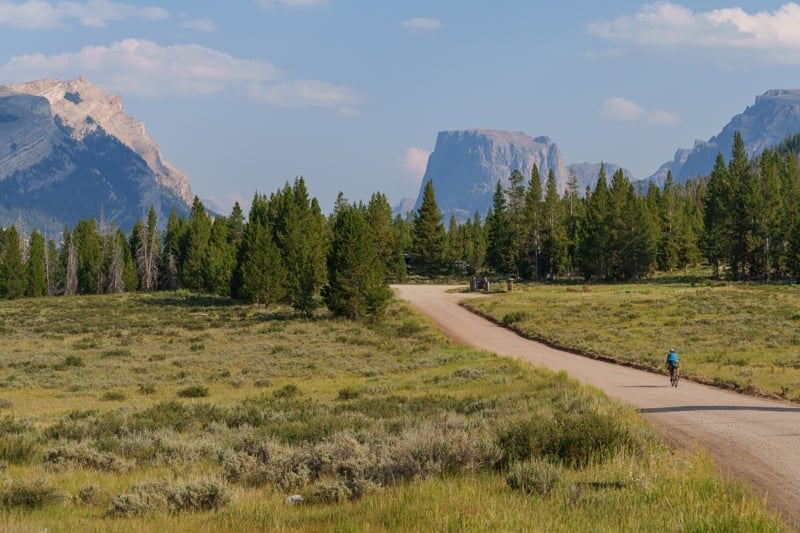
5 popular blog articles and 5 must-read tutorials of 2022
How to mix it up when you love too many outdoor sports
Allround mountain sport athlete Anton Krupicka shares how he strikes a balance with the four sports he loves.
”Embracing a variety of mountain sports has made me a more well-rounded athlete. It’s also extended my running career - there’s no way that I could only run now and stay healthy enough to race and have it be sustainable. That’s the main benefit,” Anton says.
Read more
Who’s having the most fun?
Feeling is an excellent metric for recovery. If your feelings after exercise start to trend downwards, something is not right. You may be pushing too hard, not recovering well enough or might be getting sick. Consider taking a break or doing something different for a change.
But in addition to helping you track your recovery, feeling data reveals more. Here are six interesting findings about Suunto community, based on the data from Suunto app database.
Read more
5 reasons why endurance athletes should do high-intensity strength training
To improve vertical speed and endurance, high-intensity resistance training should be an essential component of your training plan, says sports scientist, coach and athlete Susi Kraft. She is concerned many endurance athletes, whether trail runners, mountaineers or cyclists, believe they can skip the gym altogether or just do a little bodyweight training and that will suffice.
“One of the most common myths in the endurance world is that athletes should avoid lifting heavy weights, as they don’t need that for endurance, or that it will cause them weight gain and may slow them down,” Susi says. “This is just a myth. Actually, HIRT will make you faster, stronger and less prone to injury.”
Read more
Allyship in the outdoors: what is it and how to be a good ally for others?
Strong allies make for safer, more welcoming outdoor spaces. In this article by Suunto athlete, ultra-runner and diversity champion Ryan Montgomery, he explains allyship and how we can all be good allies in the outdoors.
“Not everyone feels welcome, nor safe, in the outdoors. Diverse communities – our queer, LGBT, people of color, and peers with disabilities – often experience limitations that prevent them from getting outdoors. Each of us plays a role in eliminating barriers to outdoor spaces for others; being an ally is what will make outdoor recreation safe and accessible for all people,” writes Ryan.
Read more
15 tips for beginners to fall in love with snorkeling
Dipping beneath the surface of the ocean opens up an incredible new world. It can expand our minds and bring us closer to our blue planet. With snorkeling, there’s no need for dive training or to carry heavy dive equipment. All you need is a good mask and snorkel, fins, a rash guard, reef-safe sunscreen, basic knowledge, and the new Suunto 9 Peak Pro so you can use the “snorkeling mode”.
Read more
And there’s always something to learn!
In addition to inspiring and insightful stories, several how to articles were frequently read. Check these out, for example.
Living peak adventure – How to navigate with Suunto
With a GPS watch from Suunto, a world of adventure is at your fingertips. Learn how to find, create and navigate routes that’ll keep you stoked. Read the five-part article series
How to use Karoo 2 bike computer with Suunto
Hammerhead Karoo 2 is a Suunto compatible cycling computer that brings advanced navigation features, Suunto heatmaps and intuitive software to your handlebars. But there’s more to it than that! Read more
Suunto app goes big
On a big screen device like an iPad or an Android tablet you can experience richer texture and detail while planning routes and analyzing your training data. Learn more
Track your human powered commutes with Suunto
Living a more sustainable life starts with small, everyday choices. And, when done often enough and by enough people, these small changes will add up and start to have an impact. To support you in this, we have added the ability to track your human-powered commutes with Suunto app. Learn more
Plan your interval workouts with Suunto app
Build a workout in Suunto app and let your watch guide you through your session! This is especially useful with complex sessions, like intervals. Use Suunto app to build the workout step by step from warm-up to cool-down. Learn more
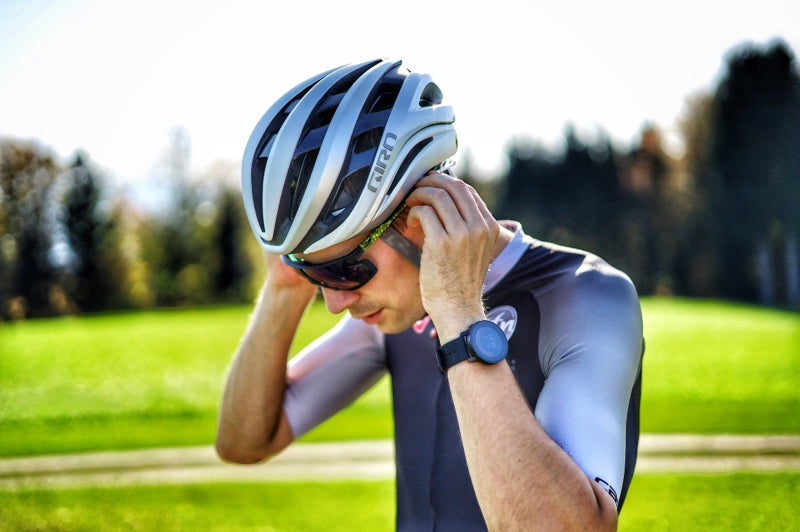
Learn how augmented reality can empower your performance now
Suunto athlete and outdoor sports junky Gregor Strasser has been using ActiveLook-powered Julbo smart glasses with his Suunto for a few months, but is already liking what he’s seeing. He’s been testing them in the mountains above Salzburg in Austria and loves the way the most important performance data is always right there, displayed on a lens.
“I’m a technology freak and hoped they would make my everyday training easier,” Gregor says. “Of course, you have to get used to the new field of view, but once everything is perfectly adjusted, you can hardly imagine it any other way.”
Focus on what matters
ActiveLook is a division of Microoled, the second largest micro OLED supplier in the world. ActiveLook produces an embedded head-up display technology that fits into sleek, lightweight frames and lenses. Marketing & partnerships director of ActiveLook, Xavier Bonjour believes smart glasses are going to revolutionize outdoor sports.
“When you have the data displayed in your field of vision, you can better manage your effort and no longer need to look at your watch anymore,” he says. “We’ve tested our technology with athletes at the Copenhagen, Boston and Paris marathons. All the users beat their personal bests by two to five minutes.”
All Suunto 9 and Suunto 5 watches are compatible
ActiveLook is a display technology used by various sport glass brands such as Engo, Julbo and Cosmo. And now this technology is compatible with the all the Suunto 9 and Suunto 5 watches, including the the new Suunto 9 Peak Pro. It gives Suunto watch owners their key data directly in their field of view, on the inside of their lenses.
“Thanks to the overhead display, you always have the most important training parameters in view,” Gregor says. “Especially in urban areas with a lot of traffic or on rough trails in the mountains, it's great not to be distracted by having to look at my watch or bike computer. This increases safety during the training sessions because you always have everything in view and can fully concentrate. I have never been able to track my performance data in such detail and always stay up-to-date. The glasses give me completely new insights that I didn't have before.”
How the technology works
ActiveLook display technology consists of the following components:
A high-precision micro-projector: the data is projected to the right eye, and the perceived position is between the upper center and upper left. It varies from user to user based on individual morphology, head size, and distance between pupils.
A low power display
Dialog based ”Smart Wearable on Chip”
Custom lens coatings to maximize visual experience
Ambient light and gesture sensors
A battery with up to 12 hours power
A charge connection on the bridge
A high brightness, 304 x 256 pixel, yellow data display
Low power (1mW) thanks to a “memory pixel” that avoids the need for refresh scanning.
Smart sport glasses weigh between 30 and 40g
The miniaturized and invisible augmented reality technology displays essential performance data without obstructing the field of vision. A smart chip integrated into the eyewear projects data to a discrete near-eye display that “melts” into the optics. It gives access in real time to whatever data is monitored by athletes as they train or compete, such as distance, duration, speed, pace, power, or heartbeat.
Train smart and boost motivation
Activelook-powered smart glasses are the perfect gadget for activities when looking at a watch is difficult, such as mountain biking in technical terrain, running hard intervals, or cross-country skiing. The technology displays the essential workout data from the watch, such as heart rate, pace, power as well as turn-by-turn navigation information.
“When you have visual data right in front of you it can be very motivating,” Xavier says. “Like your own personal coach.”
Getting used to them
Xavier says it’s hard to explain how they feel to wear. “It’s a little like wearing a watch or a ring for the first time,” he says. “The first time you put the glasses on it’s a new experience , but once you start moving you forget about them and it becomes natural. When you look ahead, the display disappears - you intuitively learn where to look to see the data. And when you take them off again, you feel something is missing. Like misplacing your smartphone.”
If possible, test them at a shop before you buy, Gregor advises. “Unfortunately, these glasses are not cheap and everything should feel good and fit perfectly.”
How to use with Suunto
After turning on your ActiveLook glasses, simply open the SuuntoPlus ActiveLook sport app in your watch and start your activity. If you don’t have ActiveLook sport app available in your watch yet, go to SuuntoPlus Store in Suunto app and select "Add to watch".
During your activity, the app will send data to the glasses (types of data available varies model to model). When using navigation with waypoints, notifications will be delivered ahead of the waypoint so you don’t miss your turns.
Note: Make sure your Suunto 9 or Suunto 5 watch is updated to the latest software.
Discover ActiveLook-powered sport glasses
ENGO sport glasses
Cosmo Vision sport glasses
Julbo's Evad-1 sport glasses
All images by Gregor Strasser
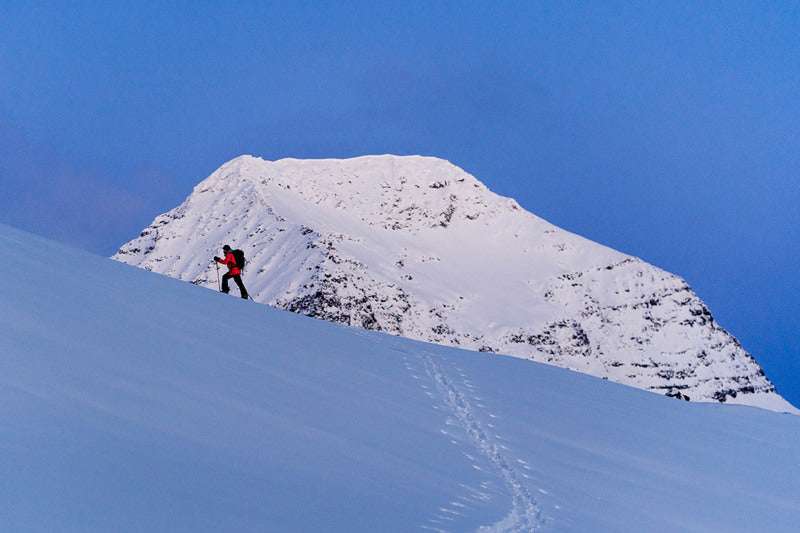
How to use Avalanche Terrain Maps
Avalanches are an integral part of the natural cycle in the mountain environments. The potential for avalanches exists on steep and even moderately steep snow slopes. When the terrain and the snowpack are right (or wrong for the backcountry travelers) avalanches can happen.
While the snow changes throughout the season, the terrain doesn’t. For snow to slide, the slope must be steep enough. Most avalanches occur on slopes between 30 and 45 degrees. That’s why we have added a new map layer in Suunto app highlighting those critical slope gradients.
You can use Suunto app and the Avalanche terrain maps on your phone, Android tablets, iPads and even newer Mac computers (Mac's with a M1 or M2 processor).
You can find the Avalanche terrain map layer in Suunto app: Go to the map view, tap the map layers button, and select the Avalanche terrain map layer. The darker the color, the steeper the slope. This information will help you plan your routes in the mountains. While planning the route, you can change between the different layers, like a regular outdoor map, the Avalanche terrain map, a ski touring heatmap and more.
A very important thing to understand about the Avalanche terrain map – and avalanches in general – is that avalanches may run out on flat and low-angle terrain. So, in addition to thinking where you are or where you plan to travel in the mountains, pay attention to what’s above you. Especially slab avalanches can be triggered remotely. A fracture in the snowpack can propagate along a weak snow layer until it reaches a part of the slope that is steep enough to slide.
Antti Autti studying the snowpack in Northern Norway.
Backcountry snowboarder and Suunto ambassador Antti Autti says he aims to plan his routes with as little exposure to avalanche danger as possible. “The further I can go without being in any avalanche terrain the better,” he says.
After planning a route using Suunto app he syncs it to his Suunto 9 Peak Pro for navigation.
“But no app alone is gonna keep me safe in the mountains. It is important to constantly educate myself and learn about snow safety so I can make the best possible decisions in the mountains,” he notes.
Images by Jaakko Posti
READ MORE
8 steps for planning trips in the mountains
How to find your way in the mountains
8 avalanche safety checks to tick off before the ski season
Follow Antti Autti’s adventures in his Arctic Lines video series where he ventures deep into the Arctic Circle in search of epic, unique and unridden lines in the frigid reaches of the Nordic north.
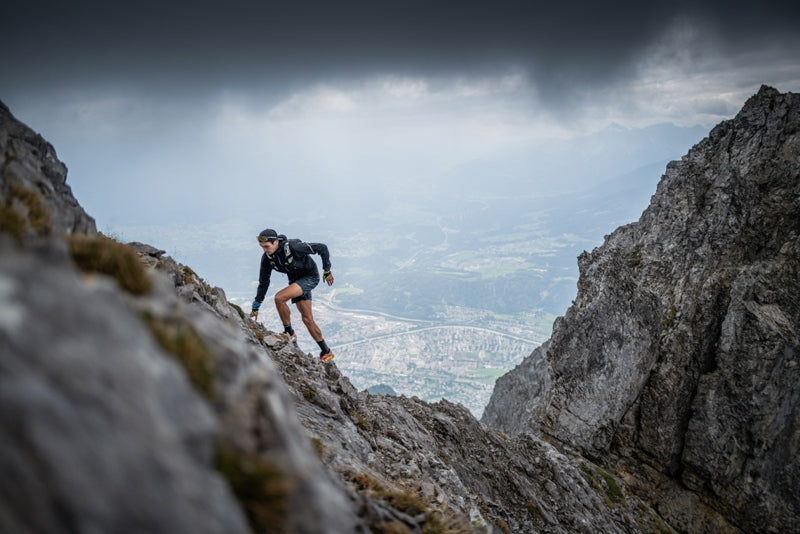
Why navigating with a Suunto has never been better
GPS is just one of many. It stands for Global Positioning System and is a US based global navigation satellite system (GNSS). There are four other GNSS and counting. With more of them connecting to your navigation device you’ll get better accuracy, more often, than with one only. That’s because it’s more likely a satellite will be directly above your position and able to send and receive clear, fast, unobstructed signals.
How GNSS work
It almost seems like science fiction: hundreds of satellites in orbit around the planet sending and receiving signals from billions of devices. But how does it all work?
A GNSS system is a group of satellites strategically placed in orbit to generate and relay geospatial data via radio signals to connected sensors on the earth – including your Suunto watch. GNSS satellites orbit the planet once every 11 hours, 58 minutes and two seconds. Each satellite transmits coded signals containing the satellite’s precise orbit details and a very stable time stamp from an atomic clock.
GNSS systems have three parts:
Space: the satellites orbiting our planet.
Control: This part includes ground stations located around the equator to control, monitor, track and communicate with all the satellites.
Users: That’s you and your Suunto watch. Or your mobile phone. Your car’s navigation system. The entire IoT! Each device includes a GNSS receiver which comprises an antenna and a processor. The former receives the signal, while the latter decodes it.
Five systems is better than one
With the release of the Suunto 9 Peak Pro, navigating with a Suunto watch and accurately tracking the route of your activity has never been better. The GPS, Galileo, GLONASS, BeiDou and the QZSS global navigation satellite systems all work with the new sleek and versatile watch. Moreover, the watch’s navigation system is controlled by a new Sony chip that requires less power, resulting in less drain on the battery.
“The increased number of visible satellites that can be utilized simultaneously will improve the likelihood your watch positions you accurately,” says Markus Kemetter, product manager at Suunto. “This is especially the case when you’re in areas with obstacles, such as a city with skyscrapers or between steep mountains where part of the sky is blocked. “In addition to being more accurate, the Suunto 9 Peak Pro’s navigation system consumes less power giving the user longer battery life.”
“Another super important thing affecting your tracking accuracy is the assistant data coming from Suunto app every time you sync,” Markus continues. “Keeping that up to date is crucial for accuracy – so sync regularly.”
They work together by default
With all those satellites orbiting the planet and connecting to your watch, it doesn’t matter whether you’re running in Manhattan or mountaineering in the Himalayas. You can count on the best accuracy of any Suunto device we’ve ever made. And there’s no need to fiddle with the settings to make any selections.
In the Suunto 9 Peak Pro all five GNSS are simultaneously active by default. You don't need to do anything"
Change your navigation settings to extend your battery life
You can change the Suunto 9 Peak Pro’s navigation settings to extend its battery life.
Performance mode
This is the setting for optimal accuracy. In Performance modem, the Suunto 9 Peak Pro’s battery can last for 40 hours before requiring a charge.
Endurance mode
Selecting Endurance mode in your Suunto 9 Peak Pro puts the watch’s navigation chip into “duty cycle mode” – it sleeps half a second and switches on for half a second to get a fix. This extends the battery life and provides a less accurate, but still reliable track. The accuracy will, however, become poorer in more difficult terrain.
Tour mode
In this mode, the watch’s battery can last up to 300 hours. The mode extends the battery life by having the navigation chip on for 1–2 minutes every 30 minutes. This reduces the accuracy and is usually used by people who are traveling light and fast, can't regularly access a charge and don’t want to carry a battery pack with them.
Lead image: © Philipp Reiter

Who’s having the most fun exercising? Here’s the answer – based on data!
Feeling is an excellent metric for recovery. If your feelings after exercise start to trend downwards, something is not right. You may be pushing too hard, not recovering well enough or might be getting sick. Consider taking a break or doing something different for a change.
But in addition to helping you track your recovery, feeling data reveals more. Here are six interesting findings about Suunto community, based on the data from Suunto app database.
1. Activity type does matter: The best feelings on average are recorded after dancing, downhill skiing, horseback riding, badminton and snowboarding.
2. Two activity types stand out as exceptionally poor: The feelings after running and trail running are clearly below other activity types.
3. Weather does not have a big impact on the feeling – unless it is a torrential downpour: The activity type, for example choosing cycling over running, has a much bigger impact.
4. Gender makes a difference: Women have more (or at least as much) fun as men in all other activity types except soccer.
5. Age does not matter: The age of the athlete did not have a correlation with the mood after exercise.
6. Country heavily impacts the mood: People exercising in Austria, China, Croatia, Poland and Serbia are generally feeling exceptionally well after a training session, while France, Italy, Japan, Spain and Sweden are in the opposite end of the list with much poorer feelings after working out.
In addition to fun facts, the data also reveals interesting trends: As an example, the feeling in cycling, swimming and walking rose to a new, higher level in March 2020 and has stayed on that higher level. Changes in other activity types since Covid pandemic started have not been as clear.
Happy adventures – and keep on tracking your activity feelings for your own wellbeing and our shared interest!
Lead image: Harald Wisthaler Bikewash image: Anthony Bonello














































































